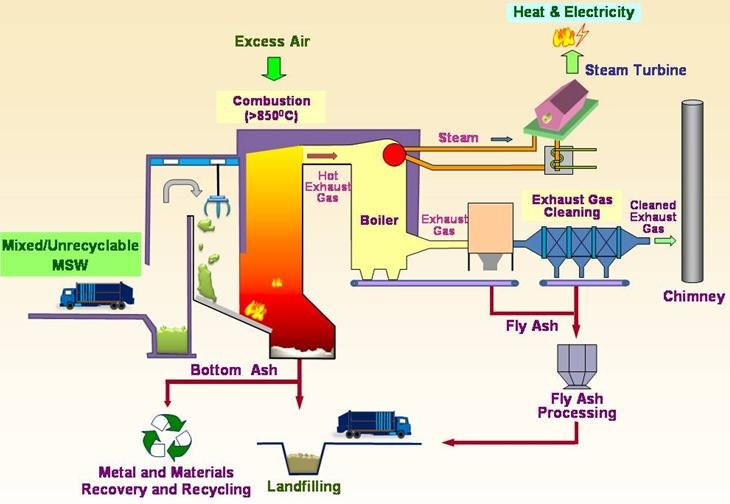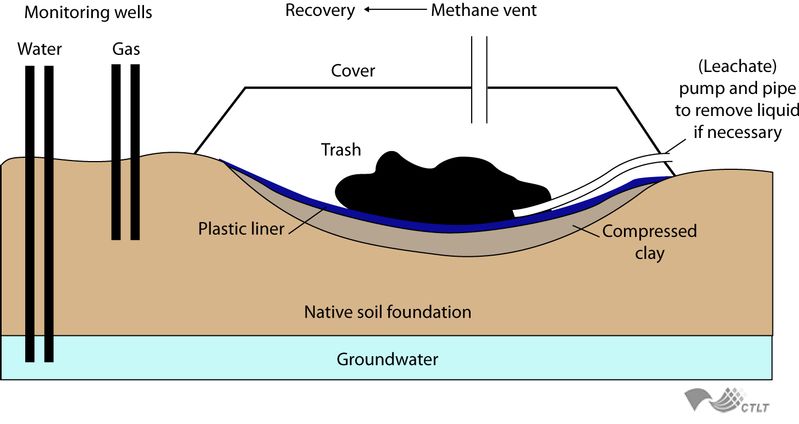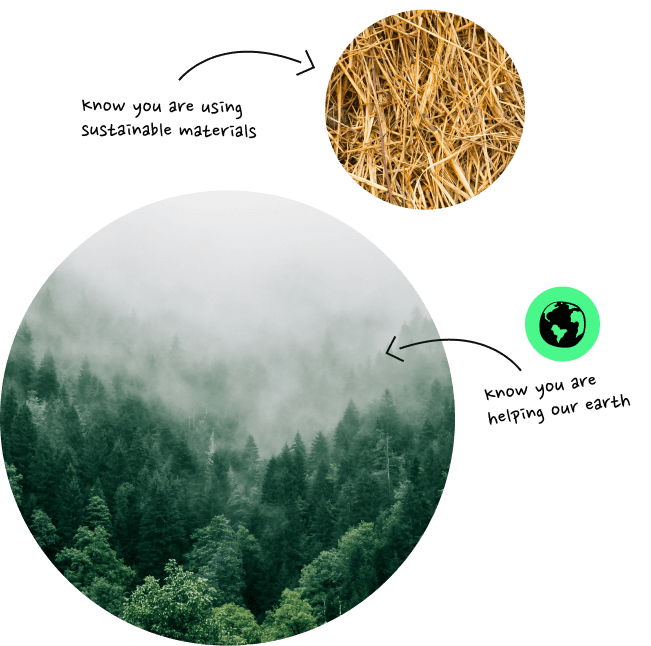It’s no secret that neither incineration or landfill is an environmental solution, but with both still being necessary evils, which is the lesser?
Deciding whether waste is piled high and left to rot over the next century, or burned to offer faster resolution is no easy task. While plenty of incineration projects have been heralded as creating energy and diverting enormous amounts of garbage away from landfill, they are not the green solutions that many have been led to believe. So, what are we supposed to do? We can start by fully understanding and acknowledging the differences and shortcomings of both options, before deciding which is less impactful.
Incineration or landfill: which is lower in emissions?
Potentially the most vital consideration, both waste management options produce emissions, but which is worse? The first stumbling block is that both generate emissions simply by requiring waste to be transported to a specialist site, but after that, more specific calculations can be made.
Incineration Emissions
Though far more energy efficient than they once were, incinerators, also known as Energy From Waste plants (EFWs), generate a large amount of carbon dioxide, as well as harmful gases that are released when plastic is burnt. These dioxins, furans and styrene emissions have been proven to have carcinogenic properties, nervous system impact and can build up in soil, water and living tissue. However, advocates for EFWs state that burning at higher temperatures reduces these gases and creates steam, which can be harvested for heating and electricity generation. Almost a silver lining around a very dark grey cloud, but the temperatures needed increases the amount of carbon dioxide being released. It equates to more than the levels a coal plant produces. Let’s also not forget that the toxic ash created by incinerators then finds itself in landfill.
The process of incineration is better explained win the following diagram:

Landfill Emissions
The main offender here is methane, which is a greenhouse gas, just as carbon dioxide is, but far more powerful and therefore more harmful. Methane builds up as a result of the sheer volume and weight of landfill piles of biodegradable waste that are forcibly decomposing but without the addition of oxygen.
In a bid to use the methane productively, it used to be trapped and burnt to produce energy but this has proven to be a prohibitively expensive endeavour with end yield not making it worthwhile for most companies. While methane levels remain a serious cause for concern, the amount of carbon dioxide emission being attributed to landfills has dropped sharply, with experts dedication that this is due to recycling becoming more accessible and less biodegradable items ending up on ‘the heap’.

Takeaway: Both create emissions, but of different variations, making them hard to compare. Landfills appear to be less impactful, on the surface, simply due to the possibility of more significant improvements, if net zero biodegradable waste additions can be reached.
Long-term effects: incineration v. landfill
Incineration has to win this round because it prevents large masses of waste from being stockpiled, right? It’s not quite as simple as that.
Long-term effects of incineration
There’s no question that EFWs need less land to operate but they have a staggering impact on global attempts to shift towards a circular economy, in order to generate as little waste as possible. This is due to plants needing to guarantee certain volumes of waste to be tackled per annum in order to retain financing and stay in operation. If consumers start wearing clothes for longer, recycling properly and choosing biodegradable packaging, the need for incineration will dwindle and that’s not something that operators want to encourage. This is why they promote incineration as a greener alternative to landfills, in a bid to lure well-meaning would-be recyclers to bring their waste for burning.
They also have wide catchment areas, which means more lorries burning more fuel to bring waste for burning.
Long-term effects of landfill
Landfills require a lot of land, can pose serious health hazards and contain toxic ash. They also aren’t able to offer the right conditions for plastic to degrade quickly, which means it simply keeps accruing, creating a never-ending cycle. Even though stringent legislation has been brought in to make landfills impermeable, leaks have been found to still occur, creating water, air and soil pollution.
Takeaway: We’re going to have to declare this one a draw, as both pose serious long-term effects. Perhaps the way sites are decommissioned could play a factor here.
What about toxins?
Through emissions and leakage, both incineration and landfill waste disposal techniques have toxicity to account for.
Incineration: Toxins
EFW emissions have been shown to include toxic metal particles and in excess of 200 chemicals, including hormone disruptors and carcinogens. These are not only found in airborne emissions however, as the ash generated from burning waste, particularly plastic, is a serious problem too. Not least because this is transported to landfill, which connects the two inextricably.
Landfill: Toxins
Older landfill sites appear to be the most toxic, as they regularly secrete leachate, the liquid that has percolated through solid waste, into the ground water. These sites are most common in rural areas and can have serious effects on drinking water quality and soil viability for crops. The issue of incinerator ash is extremely pertinent here as well, as it adds an extra layer of toxicity.
Takeaway: With toxicity caused by its own degradation and ash from EFWs brought together, landfill sites are potentially the more toxic of the two, though only due to a compound effect.
Find out more about plastic toxicity in our Red to Green Talks blog post.
Which is cheaper: incineration or landfill?
It shouldn’t come as a huge shock that landfills are significantly cheaper to run. There are a number of reasons why, but the key ones include:
- Landfill requires little or no waste sorting, meaning it is quicker, less specialist and doesn’t depend on pre-processing.
- Large pockets of land, prepared for use as landfill, will not require as much upfront financing as a land purchase plus construction of a professional plant.
- Operational costs of landfill equate to very little, compared to the vast energy costs associated with keeping incinerators burning 24 hours a day, all year round.
- Landfill waste is not taken anywhere else for disposal, meaning that it does not accrue extra EOL costs. Incinerator ash is taken to landfill.
However, it should be noted that in the long-term, incinerator operators claim that costs can be largely offset through energy creation.
Takeaway: Landfills are cheaper to run, at least in the short to mid-term. But is cheaper always better? Isn’t that how we became so dependent on fossil-fuel plastic in the first place?

Landfill v. incineration: additional points to consider
Discussing the pros and cons of both incineration and landfill leads to healthy debate, but it shouldn’t be ignored that this opportunity comes from a place of privilege. Not all areas have access to both and simple matters such as geography and weather conditions can usurp even the most compelling of arguments for one or the other.
While landfills appear to be more cost-effective, they are not able to ‘operate’ in all weather conditions. During heavy rain or wind, landfills cannot be added to because of the risk of contamination of surrounding areas. Incinerators work around the clock and in all conditions, making it potentially the more effective choice.
Toxic emissions are a serious concern with regards to both incinerators and landfill sites but technology is consistently improving, with filters and emissions capturing equipment allowing for maximum containment of gases from incineration. This can also lead to effective energy harnessing and redistribution. Japan, Sweden and mainland Europe are all making inroads into creating integrated incinerator heating systems that can become the norm.
Countries with built-up urban areas, such as Japan, are unable to consider sacrificing large pockets of land for landfill sites, so incineration plants are becoming sleeker, quieter and less invasive as a matter of course. It’s worth remembering that these plants smell less than open-air landfills as well.
So, which is better: incineration or landfill?
There’s no clear cut answer to this question and asking it simply demonstrates how much work is still yet to be done in terms of creating effective waste management systems and earth-positive packaging solutions. If we are literally asking whether we should burn or bury all of our un-recyclable plastic waste, that’s a huge problem because we should be moving away from this outmoded material altogether. Which is why the importance of end of life when considering which packaging material to choose is so vital!
When consumers are offered cost-effective and accessible alternatives to plastic that allow them to easily reduce their non-recyclables use and increase their responsible recycling commitments, the issue of burn or bury will begin to ebb away. However, if you need at least an attempt at a conclusion, we suspect that with continued technological advances and the observable successful energy redistribution being employed throughout the world, incineration may well be the lesser of two evils.
Lead image by Luciann Photography from Pexels.






